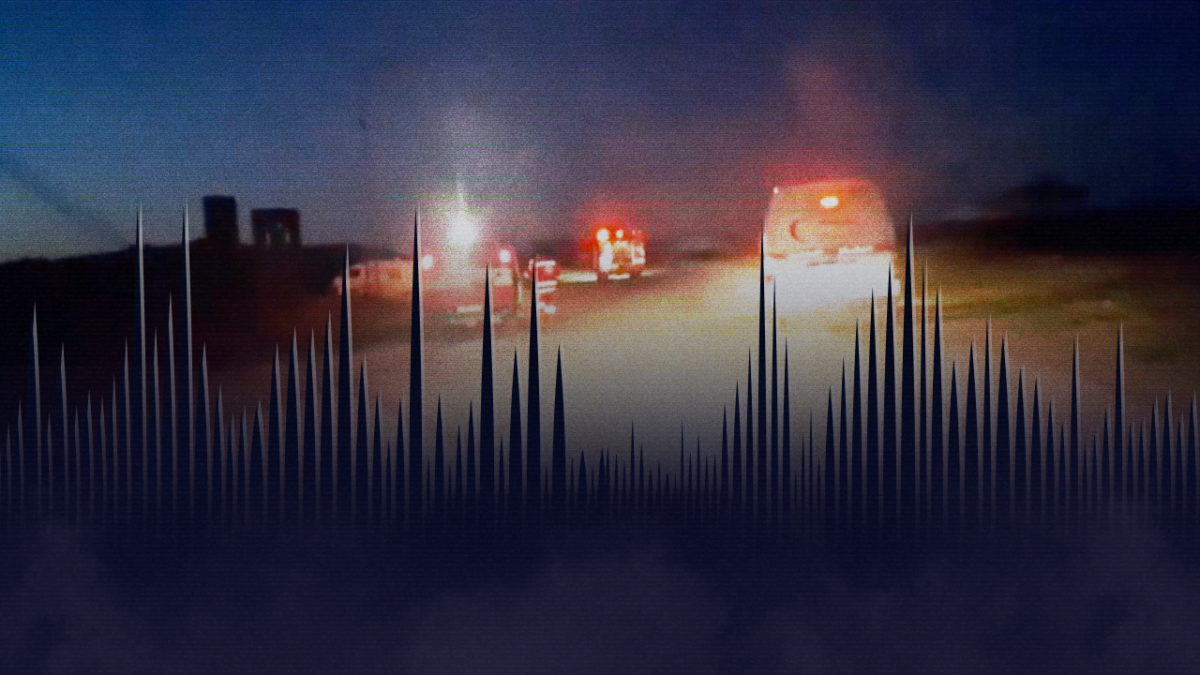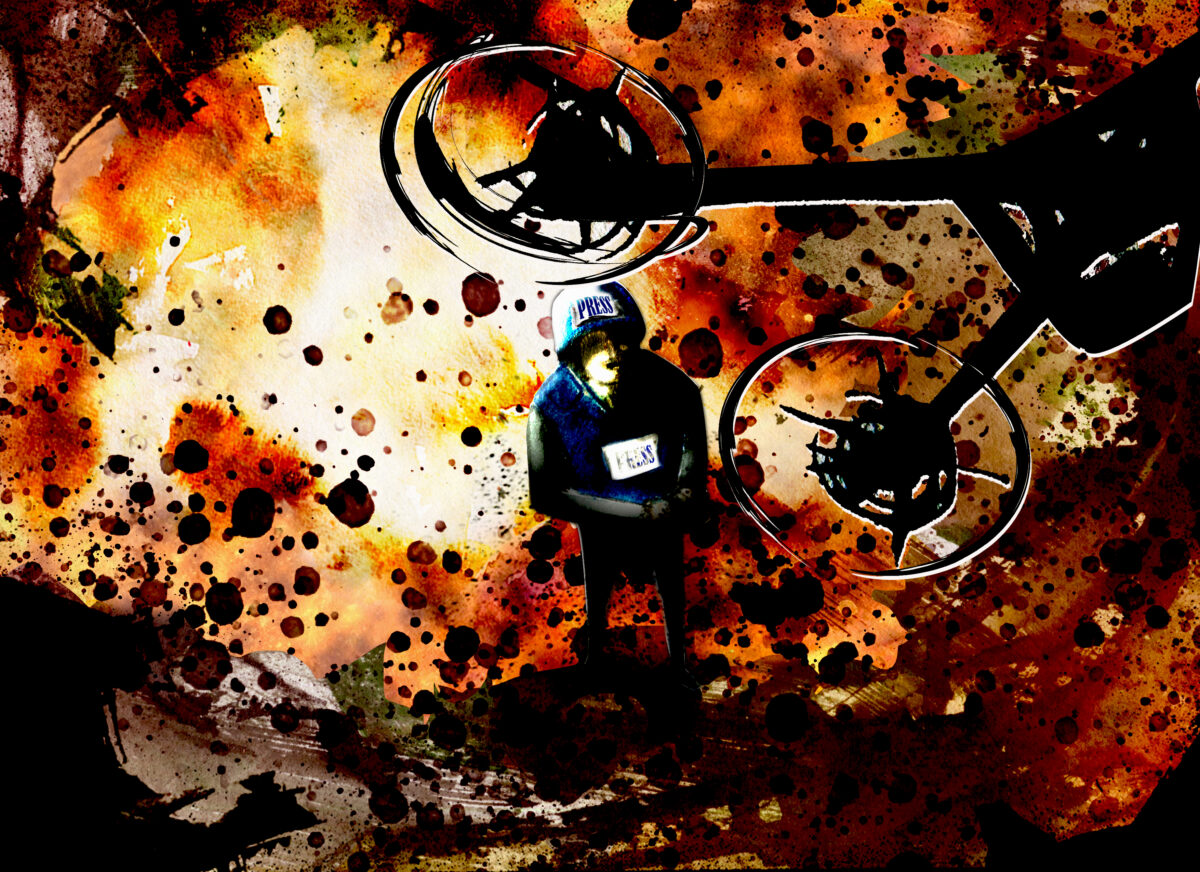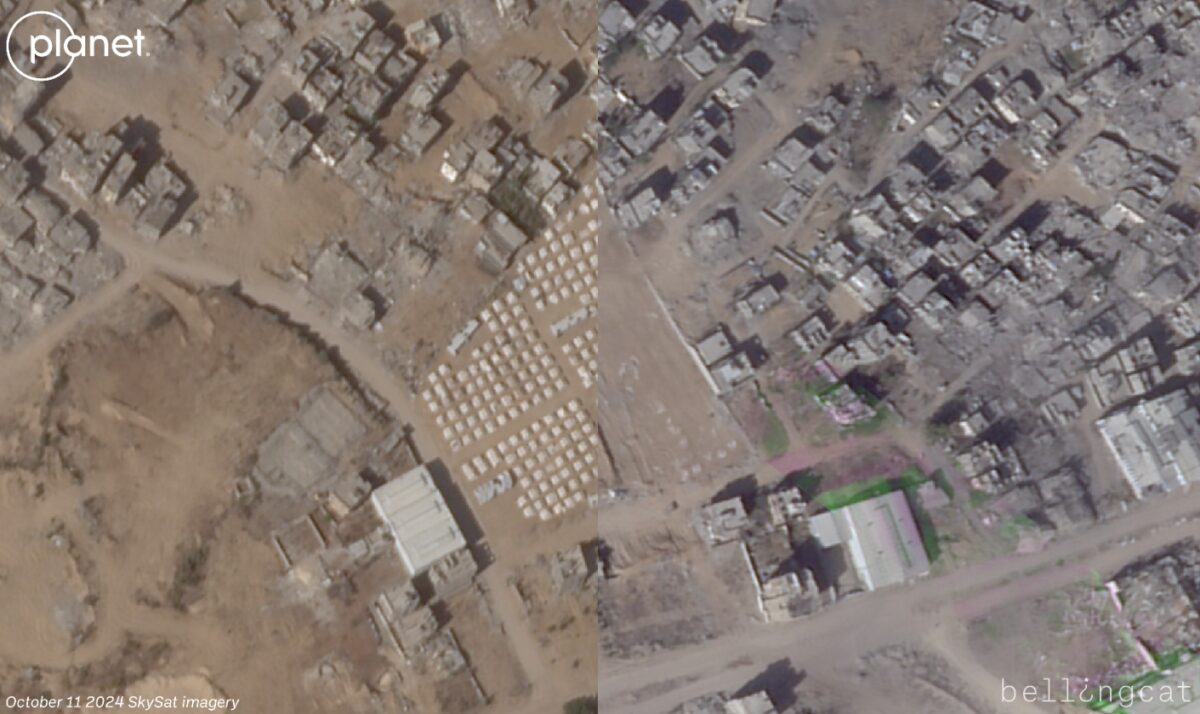Strike That Killed World Central Kitchen Workers Bears Hallmarks of Israeli Precision Strike
Seven aid workers were killed when their convoy was hit by an Israeli airstrike overnight, as it was leaving their Deir al-Balah warehouse, amid ongoing operations delivering aid supplies inside Gaza.
The food charity World Central Kitchen (WCK) said they had coordinated the convoy’s movements with the Israel Defense Forces.
In response to the strike, the IDF stated that it “is conducting a thorough review at the highest levels to understand the circumstances of this tragic incident.”
Israel’s Prime Minister Benjamin Netanyahu said on Tuesday the aid workers were killed in an “unintended strike.”
The destroyed vehicles bear the hallmarks of a precision strike, which only the IDF has the capability to conduct in the region. Images from the aftermath of the strike show that the WCK vehicles were white and at least one had the WCK logo and name clearly marked on the roof.
Bellingcat geolocated the vehicles to the outskirts of Deir al-Balah when they were struck- not far from where WCK facilities are based in Deir al-Balah.
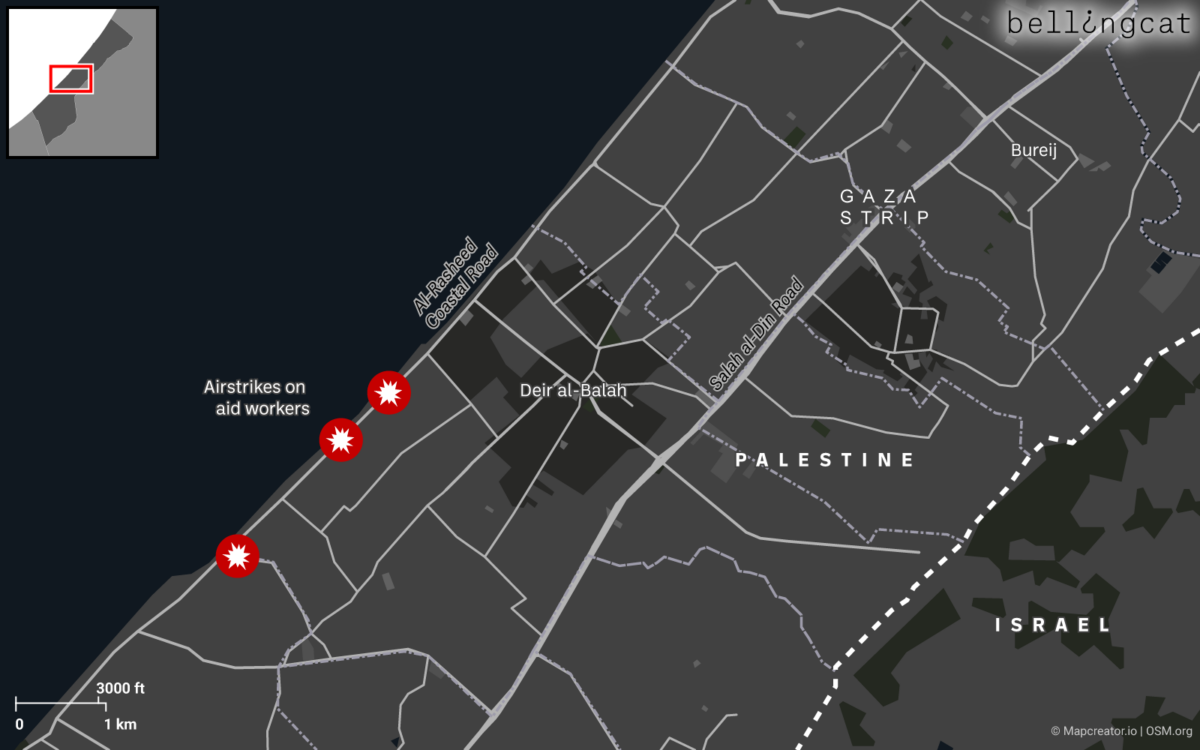
Geolocation
Images of the aftermath depict three cars which were destroyed by the strike, consistent with the WCK statement that the convoy included two armoured cars and a soft skin vehicle. The first, slightly less damaged vehicle, can be identified here: 31.4118 34.3231.
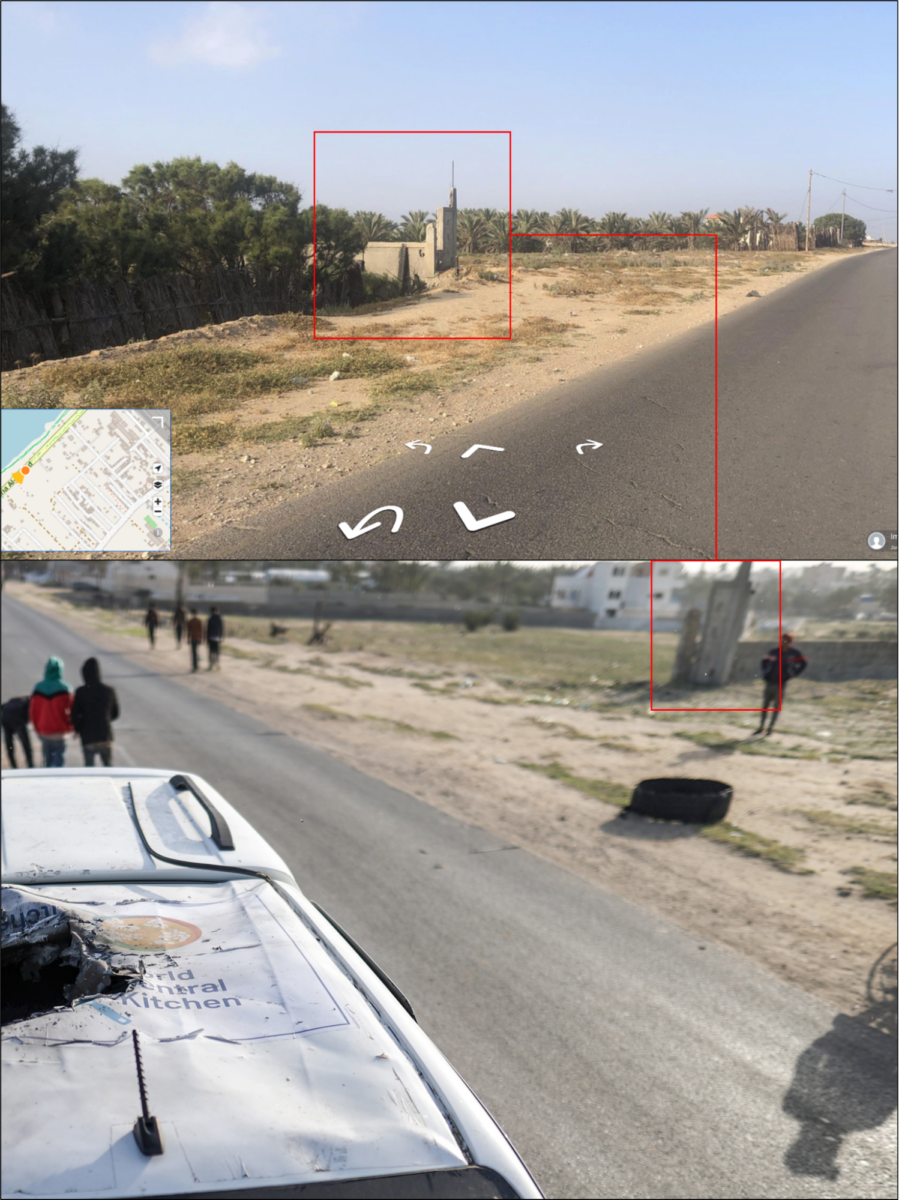
The second vehicle, which is more heavily damaged and suffered fire damage, can be identified about 800 metres away at 31.4168, 34.3290.
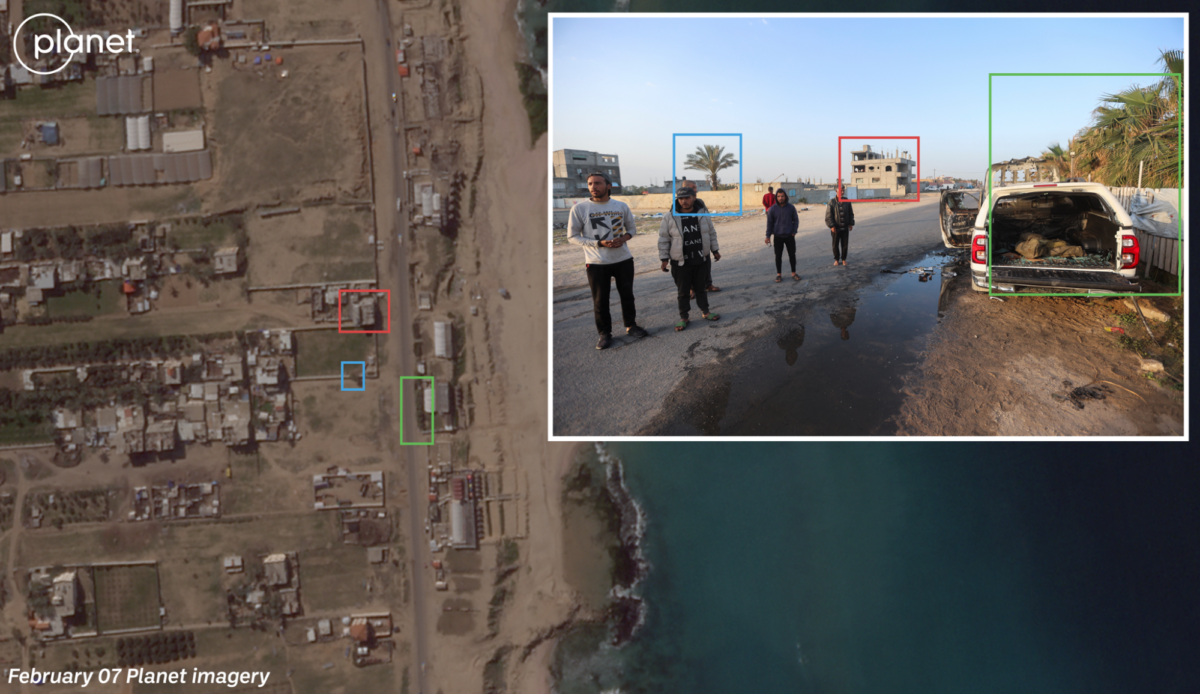
The third vehicle was identified at 31.4005, 34.3115, approximately 1.6 km to the southwest of the first vehicle. Of the three identified vehicles, this one appears to have suffered the most damage, and may be the “soft skinned vehicle” mentioned in the WCK statement.
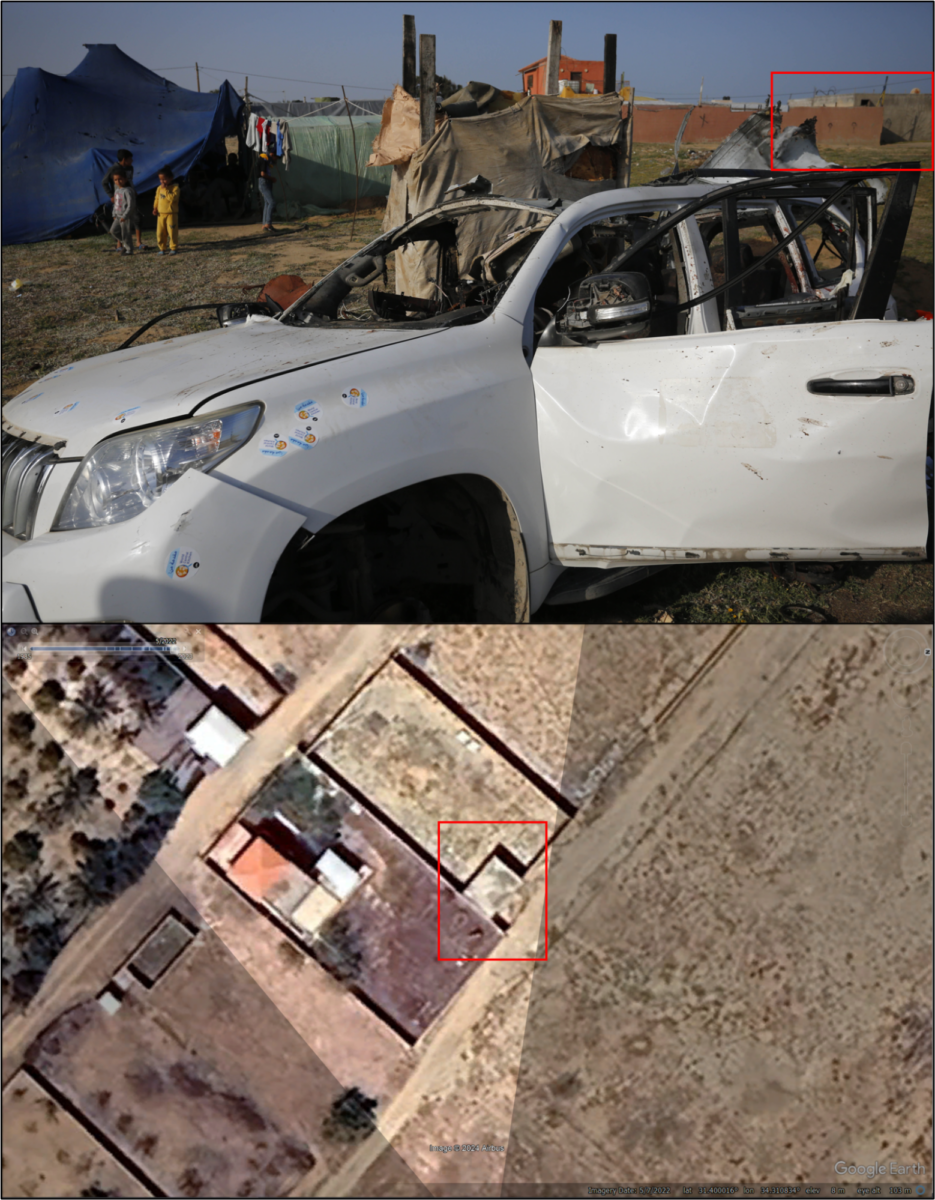
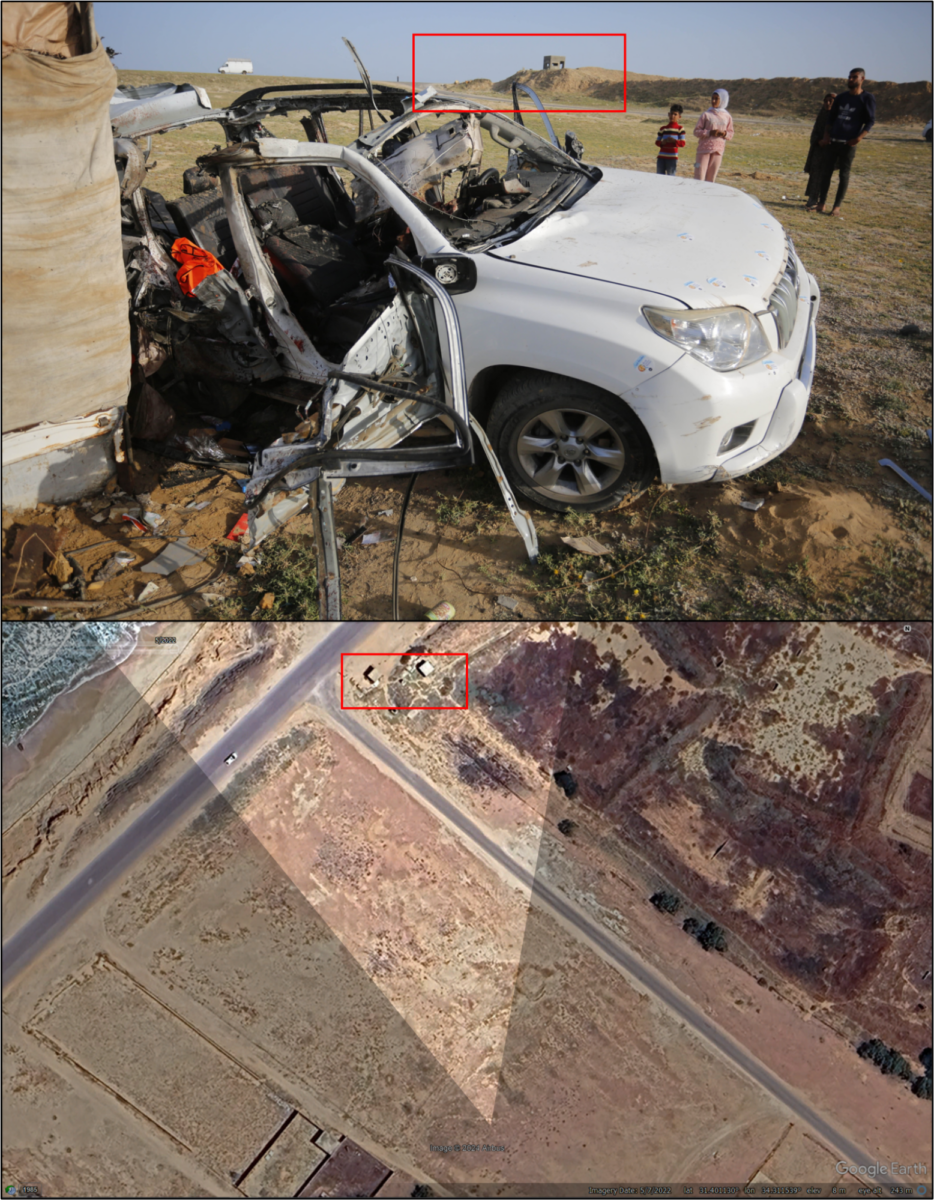
These locations are approximately 12 kilometres away from the newly built pier that was set up by WCK specifically to deliver aid, and are on the outskirts of Dier al-Balah, where the WCK facilities are based.
The WCK said: “the convoy was hit as it was leaving the Deir al-Balah warehouse, where the team had unloaded more than 100 tons of humanitarian food aid brought to Gaza on the maritime route.”
Bellingcat geolocated two of the vehicles on a road identified by the UN’s OCHA as being an “Accessible Road for Humanitarian Aid,” while the third was in a field immediately next to this road.

The Munition Signature
Although not possible to be certain without fragments of the munition itself, the WCK vehicles bear the hallmarks of a precision strike by inert or low-yield missiles.

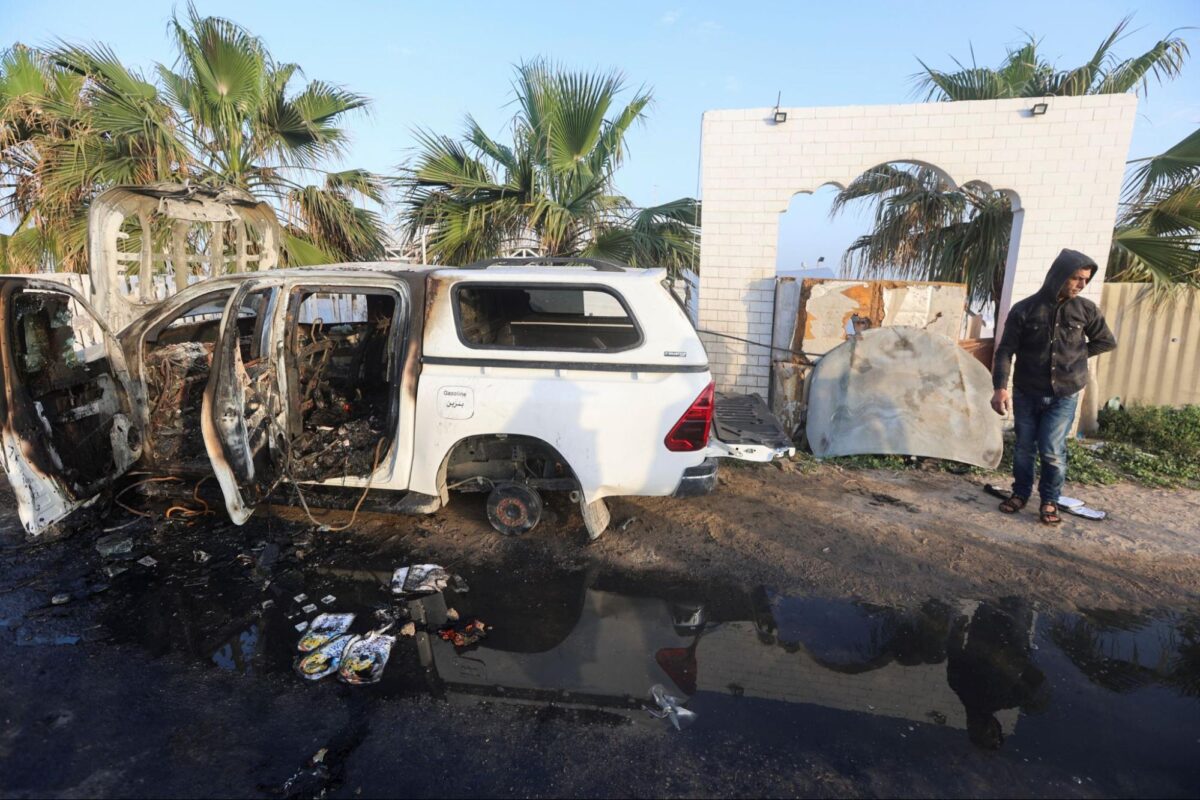
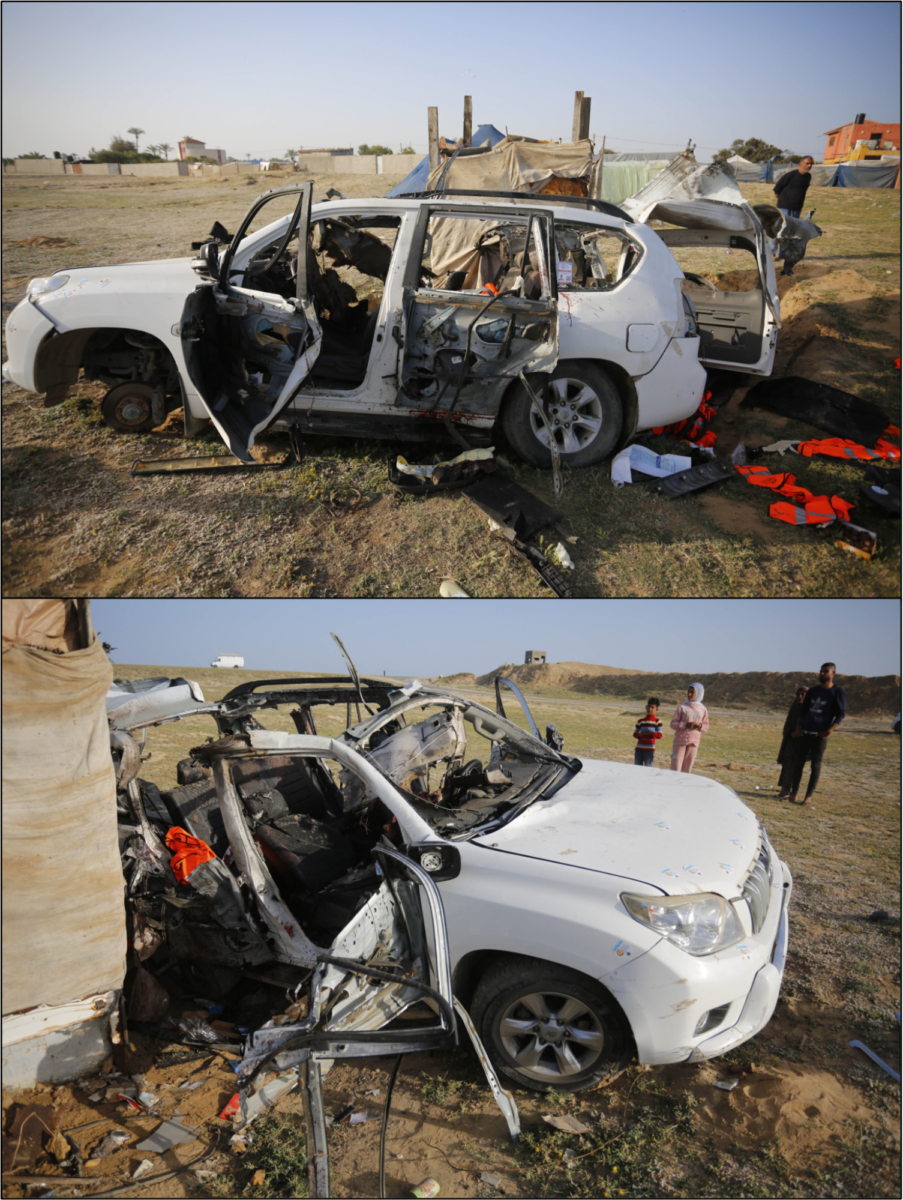
Images of the damaged vehicles are at first reminiscent of damage caused by an R9X hellfire strike, but the R9X leaves a distinctive signature which is not evident here. However, the relatively small impact hole in the roofs, the lack of fragmentation in the bodywork of the vehicles and the intact windows in some vehicles (albeit almost certainly armoured glass) do all point to some kind of low-yield or inert projectile.
It should also be taken into account that two of the vehicles were armoured, which may have mitigated fragmentation damage to them. The third vehicle appears to have suffered significantly more damage, although it still appears more consistent with a low-yield, rather than a conventional, munition.
While there’s no evidence that the IDF uses the R9X, they do use field weapons that function in a similar way, using their kinetic energy and a very small explosive payload, rather than relying on explosive effects alone. During the 2021 Israel–Palestine crisis several vehicles appear to have been struck by low-yield munitions, leading to unfounded speculation that the IDF was using R9X.
Strikes with similar signatures have also appeared in southern Lebanon.
Precision Weapons
In order to hit moving targets, such as cars, it is necessary for this kind of munition to be able to track the target in real time. For missiles similar to the R9X which have either low or no yield, this accuracy is essential, as it is necessary to hit a moving target with extreme accuracy. This is because the missile kills using the kinetic energy of the body of the munition impacting, rather than metal fragments thrown out by the blast, which is how most other conventional munitions operate.
Some munitions can do this tracking by locking onto the thermal signature of a target, such as the Javelin missile. Some, called “electro-optically guided” are physically directed to their target by an operator watching a TV feed, such as the Spike NLOS. However, the most common method remains laser guidance, where a laser is shone at a target and a missile “rides” down the reflection of the laser beam until it impacts.
In order to successfully accomplish a laser guided strike it is necessary for a platform, such as a drone, to “illuminate” the target with a laser while the missile is launched. In order to achieve accurate targeting, platforms which take part in this kind of targeting, such as Unmanned Aerial Vehicles or fast jets, are equipped with advanced optics and sensor pods. These are capable of extremely high optical magnification.
This is notable because at least one of the vehicles clearly bears the logo of World Central Kitchen on the roof. It is likely these markings would have been visible from above when the strike was carried out, although this depends on the capability of the optic used to track the vehicle.

Although we are yet to see images of missile fragments, which would be required to identify the exact munition, images of the damaged convoy indicate a precision strike was carried out using low-yield or inert munitions.
The IDF has stated that it is carrying out a review of the strike “at the highest levels,” adding:
“The IDF makes extensive efforts to enable the safe delivery of humanitarian aid, and has been working closely with WCK in their vital efforts to provide food and humanitarian aid to the people of Gaza.”
Jake Godin and Logan Williams contributed research to this piece.
Bellingcat is a non-profit and the ability to carry out our work is dependent on the kind support of individual donors. If you would like to support our work, you can do so here. You can also subscribe to our Patreon channel here. Subscribe to our Newsletter and follow us on Instagram here, YouTube here, Facebook here, Twitter here and Mastodon here.
